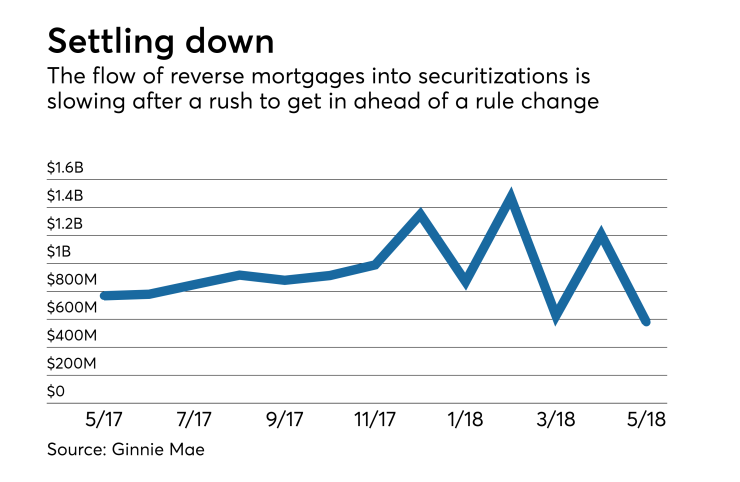New securitizations backed by reverse mortgages are now at a low not seen in two years, signaling that higher volumes seen in recent months may be tapering off.
Securitizations of Home Equity Conversion Mortgages totaled $569 million in May, down from a two-year high of almost $1.5 billion in February. Monthly issuance hasn't fallen below $600 million in two years.

While government loans have dominated the reverse mortgage market, more proprietary products have been or are being launched in response to anticipated volume declines in the public sector, according to a report from a recent National Reverse Mortgage Lenders Association conference.
"It's really hard to run a business that's so heavily dependent on Washington," said Longbridge Financial CEO Chris Mayer in a NRMLA press release. "It is important to offer non-FHA reverse mortgages so the industry is insulated from policy changes and can serve a wider variety of customers."
Longbridge plans to offer a fixed-rate loan through the wholesale channel next month.
Reverse Mortgage Funding recently began offering a higher-balance loan product for borrowers as young as 60 in some states. HECM borrowers must be at least 62. RMF's new product also was designed to address the needs of borrowers with condominium properties that don’t meet government standards.



